List of presidents of the International Committee of the Red Cross
The list of presidents of the International Committee of the Red Cross includes all presidents in the history of the International Committee of the Red Cross (ICRC) from its creation in 1863 to the present day.
The ICRC is an impartial, neutral and independent humanitarian organization. The task of the committee, which is made up of up to 25 people with Swiss citizenship , is to work for the victims of war and armed conflict . In addition, the ICRC plays an important role in the dissemination and further development of international humanitarian law and in monitoring compliance with it by the conflicting parties during a war. In the field of international relations, it is one of the few non-state original subjects of international law and has a level of competencies and responsibilities defined under international law, as well as diplomatic immunity and autonomy in its activities, which is unique for private organizations .
The President, as the highest ranking person among the members of the committee, performs both executive and representative duties. The 14 presidents in the history of the ICRC so far were, in accordance with the tasks of the committee, mainly diplomats and lawyers with regard to their professional background . In addition, two senior military personnel and a doctor were elected presidents of the ICRC. The current holder of the office has been the diplomat Peter Maurer since July 2012 .
The International Committee of the Red Cross
The International Committee of the Red Cross, founded in 1863 and based in the Swiss city of Geneva , is a humanitarian organization whose task is to protect the life and dignity of the victims of war and domestic armed conflicts . This includes, in particular, the care and care of wounded soldiers , monitoring the treatment of prisoners of war , protecting and caring for the civilian population, and searching for missing people . The legal basis for this mandate are the Geneva Conventions concluded by the international community with their additional protocols and the statutes of the committee. The ICRC also has a so-called right of initiative over and above the tasks and powers specifically defined in these legal bases. This enables the committee to offer its services to the parties involved in a conflict and to take any humanitarian initiative deemed useful or necessary by its members. His competencies in the field of international relations and diplomacy in the provision of good services are thus partly comparable with those of states.
The ICRC consists of up to 25 Swiss citizens and is a private association under Swiss association law. Since its inception, new members have been elected by the existing members, a process known as co-optation and, after decades of use since 1930, officially prescribed by the ICRC's statutes. Membership has been restricted to Swiss citizens since 1923; previously only Geneva citizens were co-opted. Fundamental principles of the committee in the performance of its tasks are impartiality, neutrality and independence. The ICRC is regarded as the highest authority in international humanitarian law and, through international treaties and a seat agreement concluded with Switzerland in 1993, has the status of an original subject of international law and a unique level of diplomatic immunity and autonomy in its work. It thus has both a national and an international legal personality . Since 1990 the committee has been authorized to attend the meetings of the United Nations General Assembly as an observer. Around 12,500 people work for the ICRC worldwide, around 800 of them at the headquarters in Geneva, around 750 delegates in international missions, around 750 specialists such as doctors , engineers , logisticians and interpreters or translators , and around 10,200 members of the national Red Cross - and Red Crescent Societies on site. The annual budget of the ICRC is around one billion Swiss francs .
For its work, the International Committee of the Red Cross was awarded the Nobel Peace Prize in 1917, 1944 and 1963 and the United Nations Human Rights Prize in 1978 .
The Presidents of the ICRC
The office of president, which has both decision-making and representative functions, is the highest position in the ICRC. The ICRC president is elected for a period of four years by the assembly consisting of all members of the committee. It is, however, a practice within the committee to grant an incumbent president a further term if he so wishes. The President is assisted by up to two Vice-Presidents who, like the President, serve for a period of four years. Both the President and the Vice-Presidents can be re-elected up to two times. As a rule, the president of the committee is also the president of the assembly council. This is a body made up of five members of the committee, which is also elected by the assembly and can make decisions for the committee in certain areas.
The two offices were only separated during the presidency of Eric Martin , when the election of Roger Gallopin as president of the assembly council resulted in a de facto double presidency . During this time, Eric Martin performed mainly representative tasks, while Roger Gallopin held executive management. This split ended with the election of Alexandre Hay to succeed Eric Martin. Both the example of the double presidency of Eric Martin and Roger Gallopin and the subsequent election of Cornelio Sommaruga to replace Jacques Moreillon are also indicative of the fact that the ICRC assembly tends to prefer candidates from high-ranking positions outside the committee for the office of president towards candidates who come from the committee itself or its administrative apparatus and staff and thus have direct experience in humanitarian work.
The first two presidents were founding members of the committee. Thereof reached Gustave Moynier , who headed the ICRC as the second president from 1864 until his death in 1910, with 46 years, the longest tenure of all presidents. At the same time, he was the youngest president in the history of the committee when he assumed the presidency. The following Gustave Ador and Max Huber were 18 and 16 years old, respectively, who were in office for more than ten years and longer than all of the presidents who followed them. Moynier and Ador are generally seen as the most dominant and formative presidents in the history of the committee. Max Huber, who headed the committee until shortly before the end of World War II , was the first president who did not come from Geneva society.
The history of the committee in the years after the Second World War was marked by the significantly shorter terms of office of its presidents. Starting with Carl Jacob Burckhardt in 1945, none of the six presidents held office for ten or more years during the following 30 years. In the period from the mid-1960s to the mid-1970s alone, three presidents were elected. In particular, the election of Eric Martin, who was the second oldest president after Guillaume-Henri Dufour when he took office , was seen as a transitional solution. In addition, Martin and his predecessor Marcel Naville are considered to be the presidents with the least influence on the development of the committee. The three presidents who followed them, Alexandre Hay, Cornelio Sommaruga and Jakob Kellenberger , each chaired the committee for more than ten years and thus brought the ICRC more continuity in terms of personnel and content in the work of its top management.
For many decades, the members of the ICRC were almost exclusively men. Recently, this has been put into perspective, the proportion of women in the current composition of the committee is around one third. This historical development of the gender distribution is reflected in the filling of the management positions. Even though women have been elected to the office of Vice-President in the last few decades, so from 1986 to 1990 Denise Bindschedler-Robert , judge at the European Court of Human Rights , from 1998 to 2005 the Geneva law professor Anne Petitpierre and from January 2008 the lawyer Christine Beerli , the previous presidents were all men.
List of presidents
| number | portrait | Surname | job | Term of office |
|---|---|---|---|---|
| 1 | Guillaume-Henri Dufour | Army General | 1863-1864 | |

|
Guillaume-Henri Dufour (1787–1875) was a cartographer and one of the first generals in the Swiss Army . He also played an important role in Swiss politics as a National Councilor and Council of States . In February 1863 he was a co-founder of the International Committee of Aid Societies for the Care of Wounded , from which the ICRC emerged in 1876. He was elected first president of the five Geneva citizens involved in the founding, but gave up the office a year later. Guillaume-Henri Dufour was extremely popular during his lifetime and is considered one of the most influential people in the history of Switzerland. | |||
| 2 | Gustave Moynier | jurist | 1864-1910 | |

|
Gustave Moynier (1826–1910) was, like Guillaume-Henri Dufour, a founding member of the International Committee. Even if the conflict with Henry Dunant shaped his presidency in historical perception , he is one of the most important and influential presidents in the history of the ICRC. At the age of 46, he achieved by far the longest term of office of all ICRC presidents. With his work, he made a decisive contribution to developing the committee from a small private association of Geneva citizens into a respected organization with international influence. In addition, he made decisive contributions to international humanitarian law and in this way gave the ICRC a secular and thus universally acceptable normative basis for its activities. His term of office included the revision of the first Geneva Convention in 1906 and the adoption of the Hague Conventions in 1899 and 1907. Although he wanted to retire from his office in 1904 and 1907 for health reasons, he refrained from being urged of the other members of the committee took this step and remained in office until his death. | |||
| 3 | Gustave Ador | Lawyer, politician | 1910-1928 | |
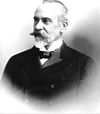
|
Gustave Ador (1845–1928) was a nephew of Gustave Moynier and had been a member of the committee for 40 years when he assumed the office of President. Before that, as a member of the National Council and Council of States , he had played a key role in shaping Swiss politics. During his time as President of the ICRC, he was also the Swiss Federal Councilor and Federal President . During his term of office the First World War fell and with it the establishment of the International Central Agency for Prisoners of War of the ICRC. The committee was awarded the Nobel Peace Prize in 1917 for its work during the war . Another important event for the committee during this time was the founding of the League of Red Cross Societies in 1919. In the context of the resulting disputes over competencies between the committee and the league, Gustave Ador was able to successfully enforce and consolidate the ICRC's claim to leadership. | |||
| 4th | Max Huber | Lawyer, diplomat | 1928-1944 | |
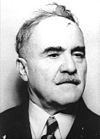
|
Before his appointment to the ICRC, Max Huber (1874–1960) worked as a lawyer in the field of international law and as a diplomat. From 1902 he was a professor of constitutional law , canon law and international public law at the University of Zurich . In 1907 he represented Switzerland at the Second International Peace Conference in The Hague . From 1920 to 1932 he was a member of the Permanent International Court of Justice in The Hague . In 1923 he was co-opted to become a member of the ICRC and five years later he was president of the committee. During his tenure in 1928, the International Red Cross was established as the umbrella organization for the committee and the league. A year later the Geneva Wounded Convention was revised and the Geneva Prisoners of War Convention was concluded. A year before the end of the Second World War , he resigned at the age of 70. He was then made honorary president and in this capacity accepted the Nobel Peace Prize for 1944, which the committee awarded for his work during the war. | |||
| 5 | Carl Jacob Burckhardt | Historian, diplomat | 1945-1948 | |

|
Carl Jacob Burckhardt (1891–1974) was a historian and from 1929 professor of modern history at the University of Zurich . He was also diplomatically active for Switzerland and for the League of Nations founded in 1920 , for example as High Commissioner for the Free State of Danzig, which is under the supervision of the League of Nations . After working for the ICRC in 1923, he became a member of the committee in 1933 and visited concentration camps in Germany in 1935 and 1936 . From 1945 to 1949, in addition to his ICRC presidency, he was also the Swiss envoy in Paris . As a result, in addition to two new offices for Vice-Presidents, the Directorate was created within the Committee under the leadership of the General Director as a new body to continue work in the absence of the President. | |||
| 6th | Paul Ruegger | Lawyer, diplomat | 1948-1955 | |

|
Paul Ruegger (1897–1988) began a career in the Swiss diplomatic service after studying law and during this time worked in Paris , Rome and London , among others . During his time as President of the ICRC, the current version of the Geneva Conventions was signed in 1949. As part of his role, he made extensive trips to the United States , the Soviet Union and China . After retiring from the office of ICRC president, he remained active in the field of international law. He worked as a mediator several times and headed several Swiss delegations at international legal conferences. | |||
| 7th | Léopold Boissier | Lawyer, diplomat | 1955-1964 | |
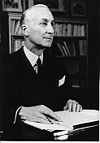
|
Léopold Boissier (1893–1968), whose father Edmond Boissier had already served as a member and vice -chairman of the committee, began working for the Federal Political Department in 1918 and was private secretary to the then ICRC President Gustave Ador during the 1919 Peace Conference. From 1921 he acted as secretary and from 1933 to 1953 as general secretary of the Interparliamentary Union . In addition, he was a full professor of constitutional law at the University of Geneva from 1955 . He became a member of the ICRC in 1946 and took over the office of President nine years later. During his tenure, the committee intervened in the Cuban Missile Crisis in 1962. He also visited the German Democratic Republic (GDR) in March and April 1963 . In December of the same year he received the Nobel Peace Prize, which was awarded to the ICRC together with the League on the occasion of the centenary of the Red Cross movement. | |||
| 8th | Samuel Gonard | Lawyer, corps commander | 1964-1969 | |

|
Samuel Gonard (1896–1975) was the second ICRC president after Guillaume-Henri Dufour to take over this office after an army career. He joined the Swiss Army while studying law and was one of General Henri Guisan's closest collaborators during World War II . After the war he taught war history and tactics at the Swiss Federal Institute of Technology in Zurich. In December 1961 he resigned from military service with the rank of Corps Commander after he had been co-opted to a member of the ICRC in the same year. Three years later he became president and led the committee during the Vietnam War and the civil war in Nigeria . In January 1969 he resigned for reasons of age. | |||
| 9 | Marcel Naville | Bank director, diplomat | 1969-1973 | |
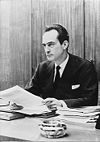
|
With Marcel Naville (1919–2003), who had studied classical philology , a president with a humanities education followed for the first time after Carl Jacob Burckhardt. His grandfather, Edouard Naville, was interim president of the committee and head of the ICRC's central office for prisoners of war during the First World War. After working for the Federal Political Department and the ICRC legal department during the Second World War, Marcel Naville began a career in banking . From 1965 he was director of the Geneva branch of the Swiss National Bank . In 1967 he became a member and two years later President of the ICRC. The Biafra War in Nigeria, which ended during his term in office, posed great challenges for the ICRC, as some national Red Cross societies openly questioned the committee's claim to leadership. The replacement of Marcel Naville in July 1973 by the election of his successor was surprising in that almost all of the committee's presidents left office at their own request. | |||
| 10 | Eric Martin | doctor | 1973-1976 | |

|
Eric Martin (1900–1980) was so far the only doctor who took over the office of ICRC president. After studying medicine and specializing as an internist , he was director of the polyclinic at the University of Geneva from 1936 to 1970 . While working at the university, he began to get involved in the Swiss Red Cross (SRC) and was later a member of the SRC Central Committee. In July 1973 he was elected President of the ICRC. During his tenure, the Red Cross focussed on peace work and the fight against torture . In the history of the committee, his presidency is regarded as uneventful, and his work as largely without lasting influence on the further development of the committee. | |||
| 11 | Alexandre Hay | Lawyer, bank director | 1976-1987 | |
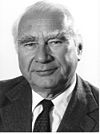
|
Alexandre Hay (1919–1991) worked for a short time as a lawyer from 1945 to 1952 in the diplomatic service of the Federal Department of Foreign Affairs . In 1952 he switched to banking and worked in various positions for the Swiss National Bank , including from 1966 to 1976 as Vice President and Director General of the Board of Directors. In 1975 he became a member of the ICRC and a year later he became president of the committee. In the eleven years of his tenure, both the ICRC's budget and the number of staff and delegates have increased many times over. One of the largest operations of the committee during this time was the evacuation of 250,000 refugees from Cambodia to Thailand in 1984 ; one of the most serious armed conflicts was the war between Iran and Iraq, which lasted from 1980 to 1988 . Alexandre Hay's work was characterized by his advocacy of an open information policy by the ICRC and his interest in good contacts to the national Red Cross and Red Crescent Societies, as well as the resulting extensive travel activities. | |||
| 12 | Cornelio Sommaruga | Lawyer, diplomat | 1987-1999 | |
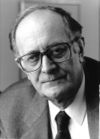
|
After studying law, Cornelio Sommaruga (* 1932) completed a diplomatic career with stations in The Hague , Bonn and Rome . Later he was deputy head of the Swiss delegation at various international organizations, from 1975 to 1987 he worked at the Swiss Federal Office for Foreign Trade. In May 1987 he took over the office of ICRC President. The defining events of his term of office were the political upheavals following the fall of the Eastern Bloc in 1989/1990 and the genocide in Rwanda in 1994. The number of ICRC missions and thus the number of delegates increased significantly during this time, but so did the number of delegates killed during their operations . The period from 1988 to 1989 was marked by an internal organizational crisis within the committee, during which Cornelio Sommaruga was accused by some of the ICRC staff for weak leadership and excessive reluctance to deal with foreign governments. Despite this criticism, he was confirmed in office in 1991 and 1995. | |||
| 13 | Jakob Kellenberger | diplomat | 2000-2012 | |

|
Jakob Kellenberger (* 1944) completed a linguistic training and joined the Federal Department of Foreign Affairs in 1974 . He held various positions in Madrid , Brussels and London , among others . From 1984, the focus of his work was Switzerland's relations with the European Communities (EC) and later with the European Union (EU). From 1989 to 1991 and from 1994 to 1998 he headed Swiss delegations for negotiations on various treaties between Switzerland and the EC and the EU. At the beginning of 2000 he became President of the ICRC. In this capacity, he met several times between 2003 and 2005 with high-ranking US government officials, including US President George W. Bush, for confidential talks about the treatment of prisoners in the US prisons in Abu Ghuraib and Guantanamo Bay . An important event during his tenure was the adoption of the third additional protocol to the Geneva Conventions in December 2005. | |||
| 14th | Peter Maurer | diplomat | since 2012 | |

|
Peter Maurer (* 1956) studied history , political science and international law and worked in the diplomatic service from 1987, including as a permanent observer for Switzerland at the United Nations (UN) in New York from 1996 . From 2004 to 2010 he headed the Swiss Permanent Mission to the UN. He then served as State Secretary in the Federal Department of Foreign Affairs from March 2010 until he took office as President of the ICRC in July 2012 . He was elected by the ICRC assembly to succeed Jakob Kellenberger on October 17, 2011. In November 2015 he was confirmed in office for a further four years until June 2020. | |||
literature
- Pierre Boissier : History of the International Committee of the Red Cross. Volume I: From Solferino to Tsushima. Henry Dunant Institute, Geneva 1985, ISBN 2-88044-012-2
- André Durand : History of the International Committee of the Red Cross. Volume II: From Sarajevo to Hiroshima. Henry Dunant Institute, Geneva 1984, ISBN 2-88044-009-2
- Caroline Moorehead : Dunant's Dream: War, Switzerland and the History of the Red Cross. HarperCollins, London 1998, ISBN 0-00-255141-1 (hardcover); HarperCollins, London 1999, ISBN 0-00-638883-3 (paperback edition)
- The President. In: David P. Forsythe: The Humanitarians. The International Committee of the Red Cross. Cambridge University Press, Cambridge 2005, ISBN 0-521-61281-0 , pp. 211-223


